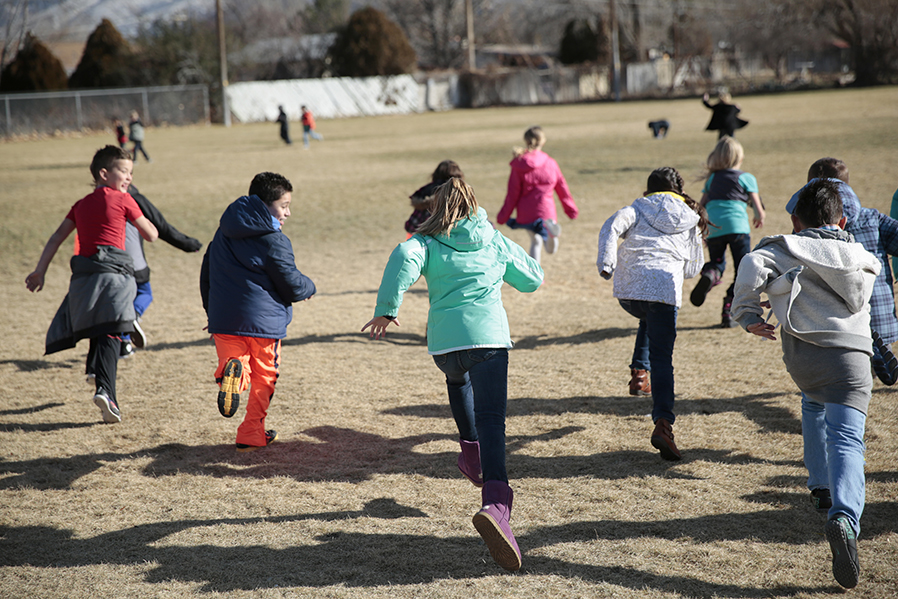Eagle and Mouse

Large Group (10 and up)
Ages 3-5
None
10 minutes or more
Development Goal
To improve observation skills.
Before You Start
- Form two lines (teams) of players, standing shoulder to shoulder with at least one arms length between them. One team is standing on one of the lines, with their backs to other line (safe spot).
- Demonstrate using volunteers.
- Draw the players in by telling a story. A mouse been wandering in a field when it began to smell the scent of an eagle. It could not see the eagle (which it knew liked to hide in trees) but it knew the eagle was nearby. So the mouse decided to remain very still so the eagle would not see it. The eagle knew the mouse was very good at finding safe places to hide from eagles so it also remained very still waiting for the right moment to pounce out of the tree and go after the mouse.
- Make sure students know when they may move and where the safe spot is at.
- Demonstrate safe tagging:
- Light touch, like butterfly wings on the shoulder.
- Unsafe tags: hard contact that might cause the person being tagged to fall.
Set Up
Two lines 10-15 feet apart.
How to Play
- Designate one team as the eagles who will remain very still until it has decided to go after the mouse, but once it moves, even a little bit, the mouse can start running.
- The mouse cannot move until it sees the eagle move.
- The mouse wants to make it to a “safe” spot, the other line.
- Talk to the students about places that are safe and have them visualize safe places while they are playing.
- As the students get better at getting to their safe spot, shorten the distance between the mouse and the eagle.
Discussion Questions:
- Do you feel you have enough safe spots in your life?
- How hard was it to get to your safe spot?
- How could this game help you to be safe?
Variations
The Lizard and the Fly is basically the same game but instead of the students going from a standing position they must both start from the ground on their backs. When the lizard starts to move the fly can also get up and run.